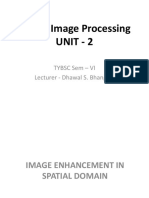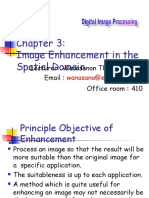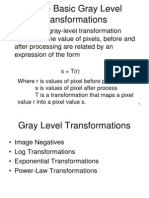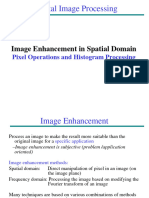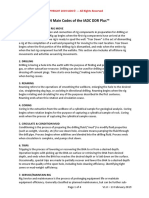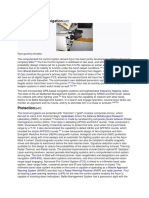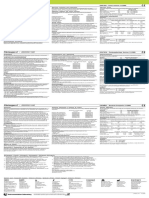0% found this document useful (0 votes)
135 views60 pagesImage Enhancement in Spatial Domain
This document provides an overview of image enhancement techniques in the spatial and frequency domains. It discusses various spatial domain techniques including linear and non-linear transformations, histogram processing, filtering, and sharpening. Common spatial filters include smoothing, sharpening, and order-statistics filters. Frequency domain techniques operate on the Fourier transform of an image and allow for filtering in the frequency domain.
Uploaded by
Naveen JaiswalCopyright
© © All Rights Reserved
We take content rights seriously. If you suspect this is your content, claim it here.
Available Formats
Download as PDF, TXT or read online on Scribd
0% found this document useful (0 votes)
135 views60 pagesImage Enhancement in Spatial Domain
This document provides an overview of image enhancement techniques in the spatial and frequency domains. It discusses various spatial domain techniques including linear and non-linear transformations, histogram processing, filtering, and sharpening. Common spatial filters include smoothing, sharpening, and order-statistics filters. Frequency domain techniques operate on the Fourier transform of an image and allow for filtering in the frequency domain.
Uploaded by
Naveen JaiswalCopyright
© © All Rights Reserved
We take content rights seriously. If you suspect this is your content, claim it here.
Available Formats
Download as PDF, TXT or read online on Scribd
/ 60













